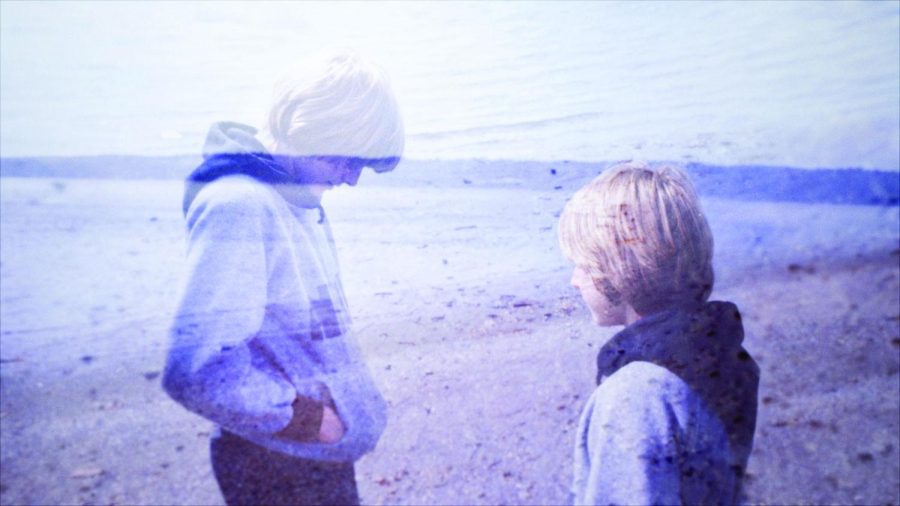The World of Kurt Cobain: ‘Montage of Heck’ offers unique, personal look inside the life of late Nirvana frontman
May 5, 2015
“Montage of Heck”
Directed by: Brett Morgen
Starring: Kurt Cobain, Courtney Love, Krist Novoselic
Grade: A-
Minimum wage workers line shelves at Hot Topic with $15 T-shirts in the Nirvana frontman’s likeness, while antisocial teenagers repost photos of him on Tumblr, portraying him as the spokesman of generational depression and drug use, glamorizing his deepest internal struggles.
In “Montage of Heck,” director Brett Morgen seeks to dispel this enchantment with the dead rockstar. The documentary, which aired on HBO on May 4, follows Cobain’s short life through an honest collection of his music, art and journals along with Super 8 home videos and audio montages his family provided. Using these sources alongside cartoons and personal interviews, Morgen sets a dark, haunting mood that evokes, rather than sugarcoats, the man who innovated ‘90s alternative music.
The documentary opens with what seems like a routine interview with Cobain’s sister, Kim, overlaid with scenes from his 1992 Reading, Pa. concert. She discusses Cobain’s creative brilliance against an off-putting backdrop where Cobain is rolled out onto the stage in a wheelchair, feigning sickness at the beginning of his show. Meanwhile, Kim divulges how grateful she is not to have inherited the Cobain “genius brain.”
This initial interview with Kim foreshadows Cobain’s impending despair.
Through interviews with his mother and father in dramatic, darkly-lit rooms, Morgen reminds the viewer that unrequited love with just about everyone in his life were the roots of Cobain’s flourishing creative vision. “Montage of Heck” digs into the places that still haunt Cobain’s parents — from the guilt they still feel for tossing the teenaged Cobain around between their homes to the regret in their eyes as they reflect on the times they should have comforted him rather than humiliated him for being different.
“Montage of Heck” continues to portray Cobain’s darkness through Stefan Nadelman’s gloomy yet colorful graphic novel-style cartoons. These, coupled with his own audio recordings, bring the viewer uncomfortably close to Cobain’s double-edged need and fear for love. The illustrations are reminiscent of Seattle, the place Cobain lived and died — gloomy and rainy, with an overriding veil of blues, grays and greens that echo the darkness growling within Cobain.
Morgen’s narrative could throw a new light on Cobain for even his most enthusiastic fans. The juxtaposition of Cobain’s own creepy artwork — complete with fetuses, flowers and strange aliens — paired with spooky piano-heavy covers of his music hits the viewer right in the gut. Morgen shows viewers Cobain’s unique struggle in a way print biographies never could. Through a visual and audio depiction of Cobain’s chronic depression, the documentary makes us wish we stopped trying to understand him long ago. Cobain wasn’t a tragic hero to pick apart, just a man filled to the brim with insufferable pain.
In contrast to the dark tone of the documentary, Morgen’s inclusion of Courtney Love’s Super 8 home videos portray Cobain as anything but brooding and antisocial. The images of Courtney and Kurt screwing around in the bathroom or creating uncomfortably strange, yet cute videos of their daughter, Frances, show us the relationship in a novel, light-hearted way.
The cut-scene ending after Cobain’s MTV Unplugged set was a bold and smart move that both frustrates and fulfills us. Cobain overdosed on heroin and died from a shotgun wound to the head on April 5, 1994. Morgen’s decision to end the film abruptly in this way mimics his tragic death. There are no interviews discussing Cobain posthumously. The film ends where his life ends, proving “Montage of Heck” to be a documentary about a man, not a star.
“Montage of Heck” isn’t for the weak-stomached or die-hard Cobain fans that want his life memorialized and packaged neatly with a ribbon. It’s for the parents that just couldn’t comprehend Nirvana’s angry, thrashing music or cryptic lyrics. It’s for the media moguls who wouldn’t give Cobain breathing holes. But mostly, it’s for the people who over-dramatize and fawn over Cobain as a speaker for a whole generation.
The documentary’s foremost success lies in its ability to disenchant the viewer. Portraying Cobain as a man, rather than an icon, brings him down to size and reminds fans and critics alike that there is nothing comfortable or cool about internal struggle or addiction.








